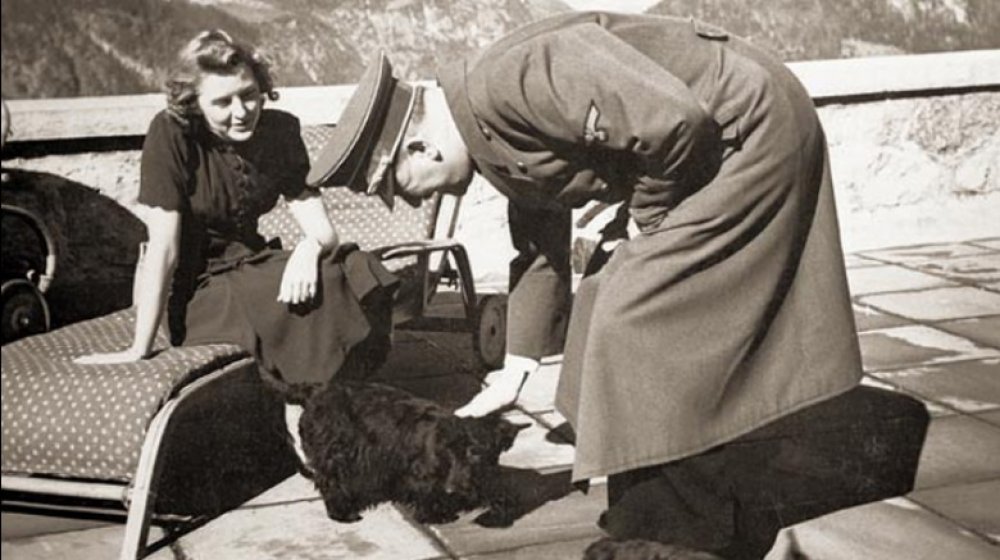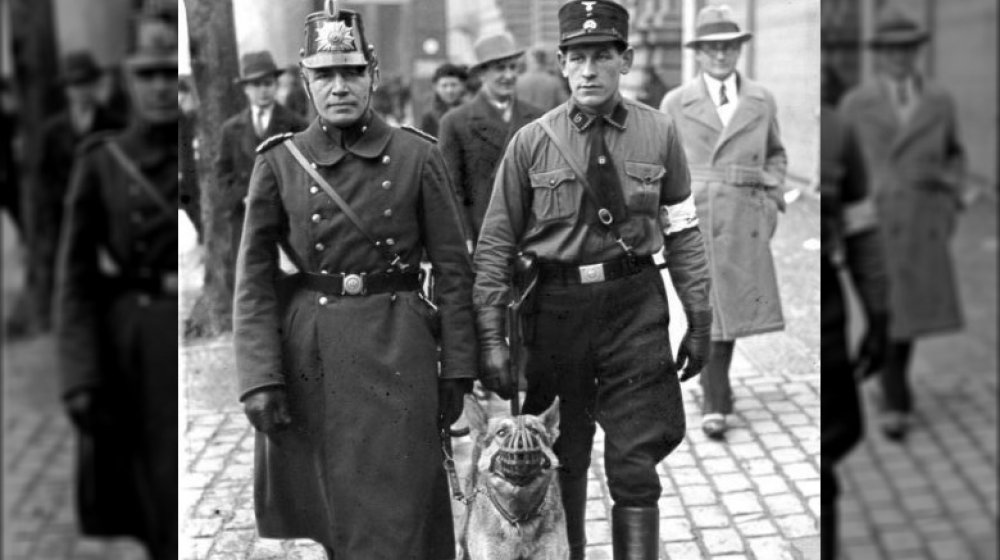The Sad Truth About The Nazi's Animals
Whether it's the horrific experiments led by "angel of death" Josef Mengele, the horrors of concentration camps like Ravensbruck — or, you know, Hitler — you won't be hard-pressed to find examples of Nazis being unspeakably awful. Yet in a jarring contradiction, the genocidal Nazi regime also seemed to really love animals and even advocated for their rights. That stark dichotomy of inhumanity toward man and humane treatment of animals becomes evident in Deutsche Welle's description of a small zoo located "just a stone's throw away from the Buchenwald concentration camp crematorium."
Funded through the extortion on concentration camp inmates, the zoo served as a "diversion" for guards and civilian employees. There they could immerse themselves in monkeys, bears, birds, and goldfish. According to the Seattle Times, after ascending to power in 1933, the Nazis quickly implemented legislation regulating the slaughter of animals. That same year, Hitler's deputy, Hermann Göring, decried the "unbearable torture and suffering in animal experiments," threatening to "commit to concentration camps those who still think they can continue to treat animals as inanimate property."
By contrast, at Buchenwald, Jews, Roma, Sinti, and homosexuals were persecuted and murdered, per the Buchenwald Memorial. More than 56,000 inmates perished after being subjected to torture, experimentation, and illness. This wasn't a case of especially sinister cognitive dissonance. The Nazis' appreciation of certain animals and active push to prevent their suffering were ideologically entwined with cruelty toward humans deemed inferior.
Nazis were kind only to be cruel
Seattle Times contributor Alexander Cockburn observes that the Nazis' quest for racial purity and Aryan dominance was often framed in farming terms, treating "lower animals" as tantamount to racial "contaminants." They idolized apex predators, especially wolves and lions. Hitler particularly liked wolves, which made him partial to German Shepherds by extension, says Deutsche Welle. He thought the latter looked like wolves, and they became guard dogs at concentration camps. Hermann Göring served as Master of the German Hunting Society and owned seven lions, which he esteemed as status symbols.
While they placed big cats on pedestals, Nazis perceived house cats as pests. They equated the animals with Jews, characterizing them as "treacherous, false and antisocial." Jews were barred from owning pets, a prohibition that coincided with mass deportations to concentration camps. The move to outlaw certain forms of animal slaughter was also designed to criminalize Jewish rituals. Unsurprisingly, the Nazis' brand of animal love was bred by hate.

